Abstract
1. The effect of the diurnal activity of the parasympathetic nervous system on bronchomotor tone and heart rate was studied in seven asthmatics with nocturnal asthma using both intravenous atropine and nebulised ipratropium at 04.00 h and 16.00 h. 2. A diurnal variation in vagal activity was demonstrated with higher vagal activity occurring at night. 3. There was a strong correlation between the initial response of both airway calibre and heart rate to vagal block both at 04.00 h and 16.00 h. However the duration of bronchodilation after vagal block was greater than with the heart rate suggesting differing sensitivities of pulmonary and cardiac muscarinic receptors to anticholinergic antagonists. 4. The bronchodilation seen after ipratropium was less than that after atropine suggesting that the intravenous route is preferable to study the physiological effect of vagal block in vivo.
Full text
PDF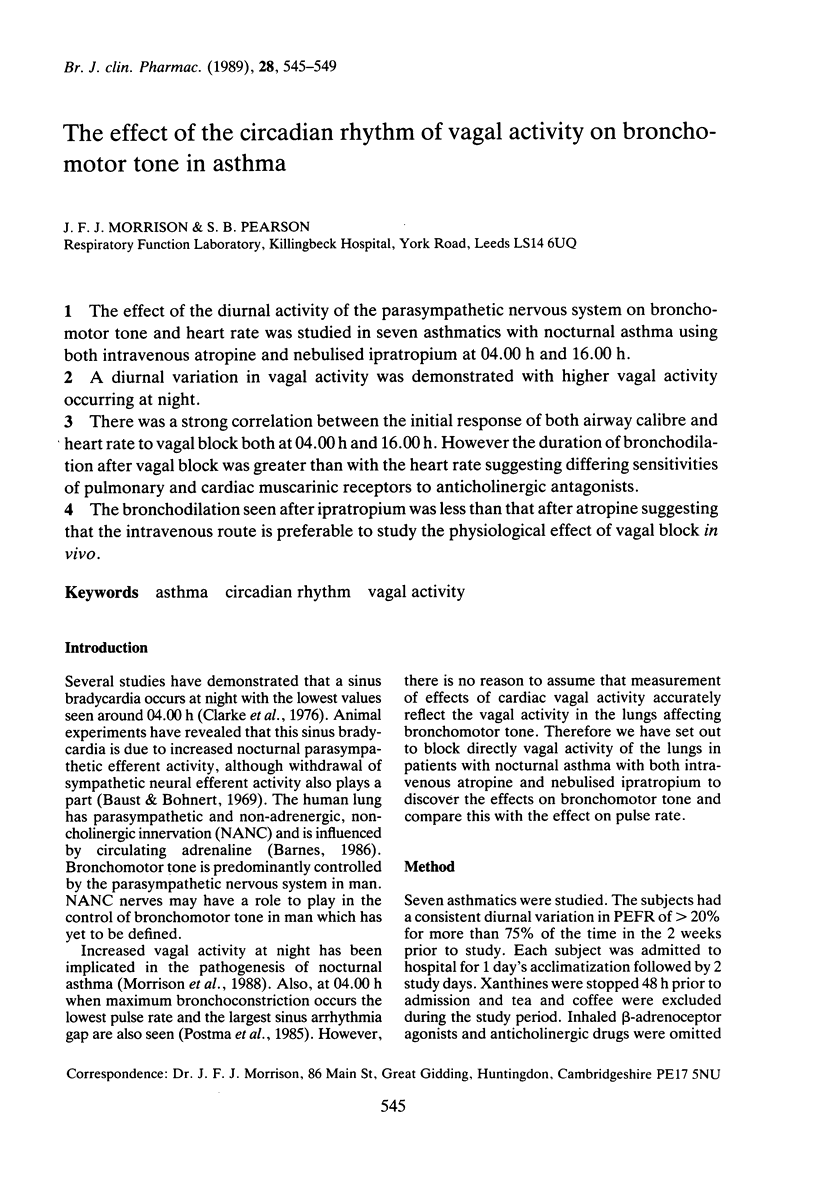
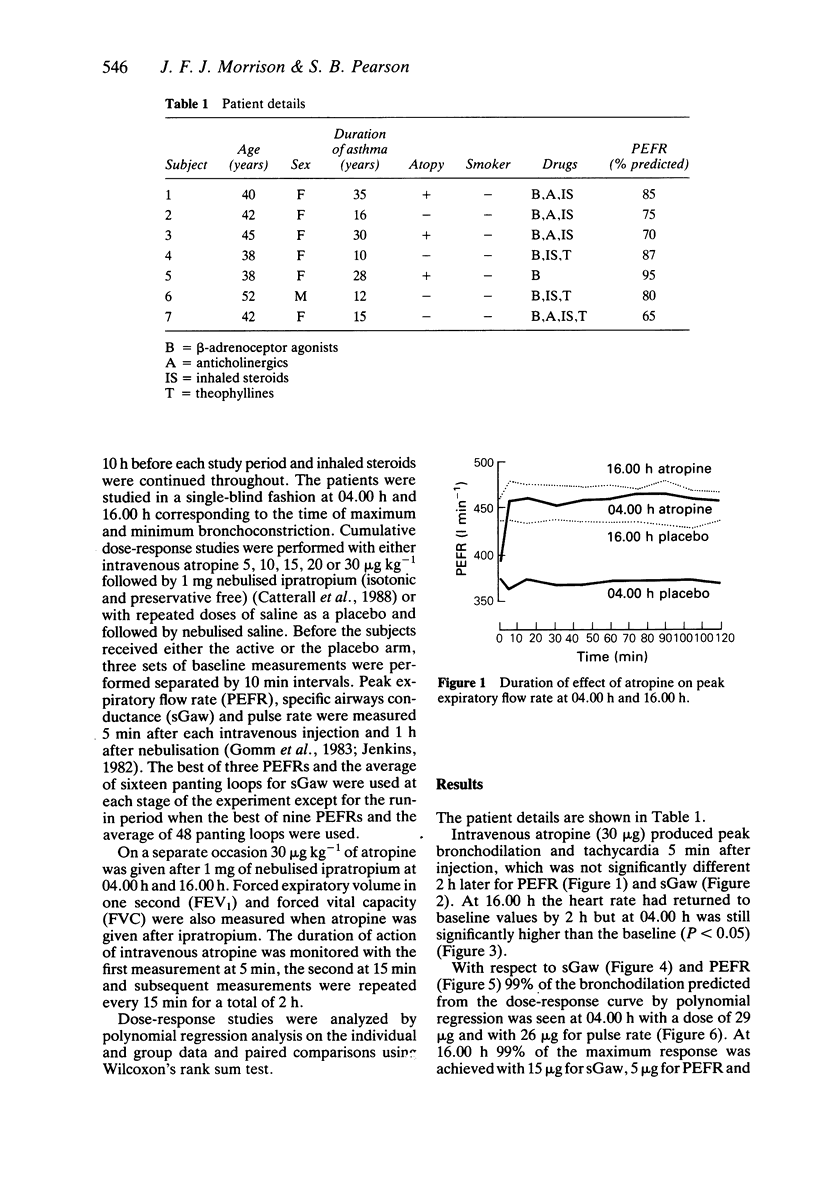
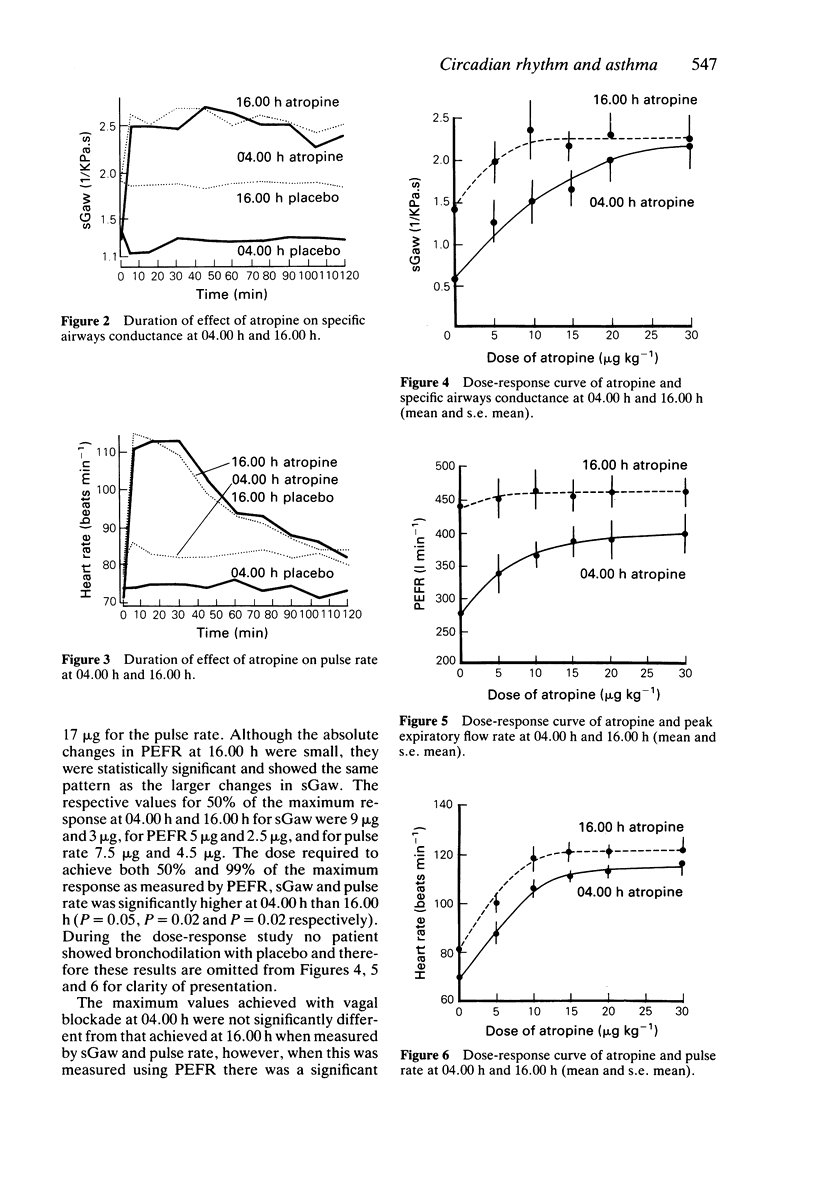
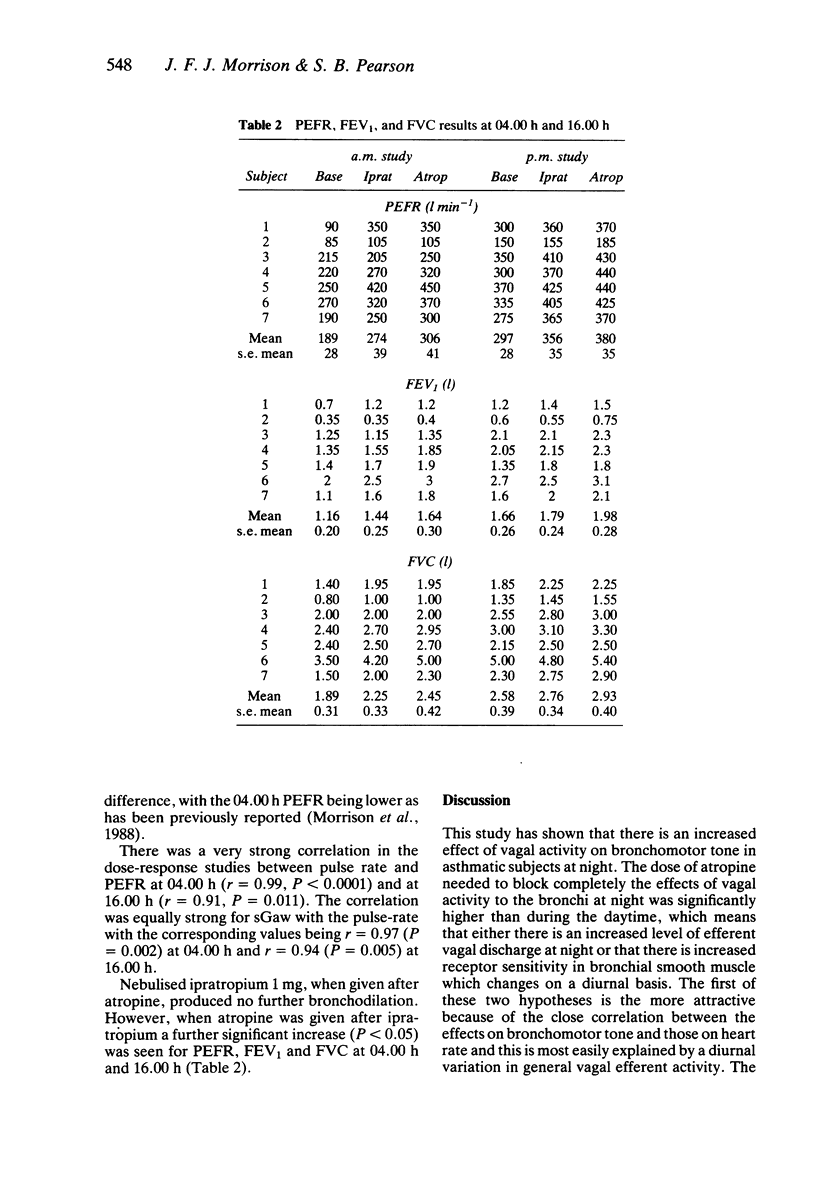
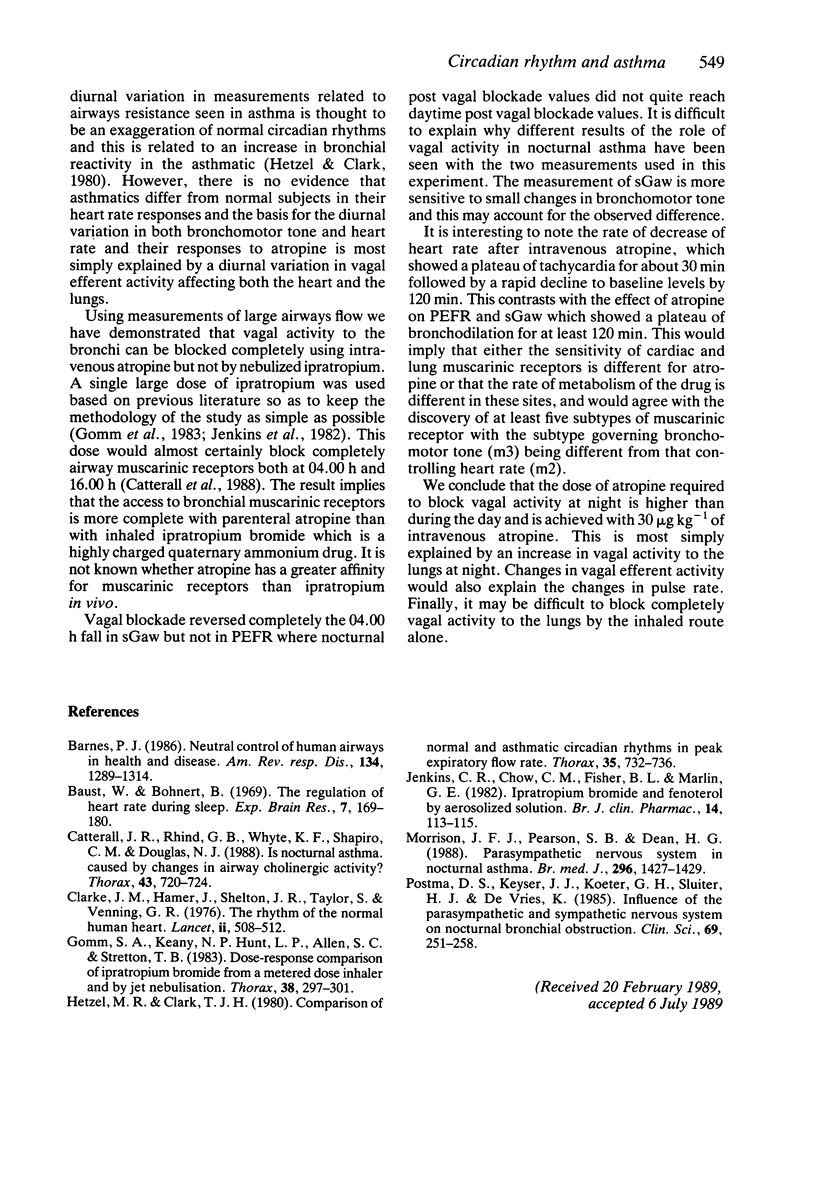
Selected References
These references are in PubMed. This may not be the complete list of references from this article.
- Barnes P. J. Neural control of human airways in health and disease. Am Rev Respir Dis. 1986 Dec;134(6):1289–1314. doi: 10.1164/arrd.1986.134.5.1289. [DOI] [PubMed] [Google Scholar]
- Baust W., Bohnert B. The regulation of heart rate during sleep. Exp Brain Res. 1969;7(2):169–180. doi: 10.1007/BF00235442. [DOI] [PubMed] [Google Scholar]
- Catterall J. R., Rhind G. B., Whyte K. F., Shapiro C. M., Douglas N. J. Is nocturnal asthma caused by changes in airway cholinergic activity? Thorax. 1988 Sep;43(9):720–724. doi: 10.1136/thx.43.9.720. [DOI] [PMC free article] [PubMed] [Google Scholar]
- Clarke J. M., Hamer J., Shelton J. R., Taylor S., Venning G. R. The rhythm of the normal human heart. Lancet. 1976 Sep 4;1(7984):508–512. doi: 10.1016/s0140-6736(76)90801-1. [DOI] [PubMed] [Google Scholar]
- Gomm S. A., Keaney N. P., Hunt L. P., Allen S. C., Stretton T. B. Dose-response comparison of ipratropium bromide from a metered-dose inhaler and by jet nebulisation. Thorax. 1983 Apr;38(4):297–301. doi: 10.1136/thx.38.4.297. [DOI] [PMC free article] [PubMed] [Google Scholar]
- Hetzel M. R., Clark T. J. Comparison of normal and asthmatic circadian rhythms in peak expiratory flow rate. Thorax. 1980 Oct;35(10):732–738. doi: 10.1136/thx.35.10.732. [DOI] [PMC free article] [PubMed] [Google Scholar]
- Jenkins C. R., Chow C. M., Fisher B. L., Marlin G. E. Ipratropium bromide and fenoterol by aerosolized solution. Br J Clin Pharmacol. 1982 Jul;14(1):113–115. doi: 10.1111/j.1365-2125.1982.tb04946.x. [DOI] [PMC free article] [PubMed] [Google Scholar]
- Morrison J. F., Pearson S. B., Dean H. G. Parasympathetic nervous system in nocturnal asthma. Br Med J (Clin Res Ed) 1988 May 21;296(6634):1427–1429. doi: 10.1136/bmj.296.6634.1427. [DOI] [PMC free article] [PubMed] [Google Scholar]
- Postma D. S., Keyzer J. J., Koëter G. H., Sluiter H. J., De Vries K. Influence of the parasympathetic and sympathetic nervous system on nocturnal bronchial obstruction. Clin Sci (Lond) 1985 Sep;69(3):251–258. doi: 10.1042/cs0690251. [DOI] [PubMed] [Google Scholar]


